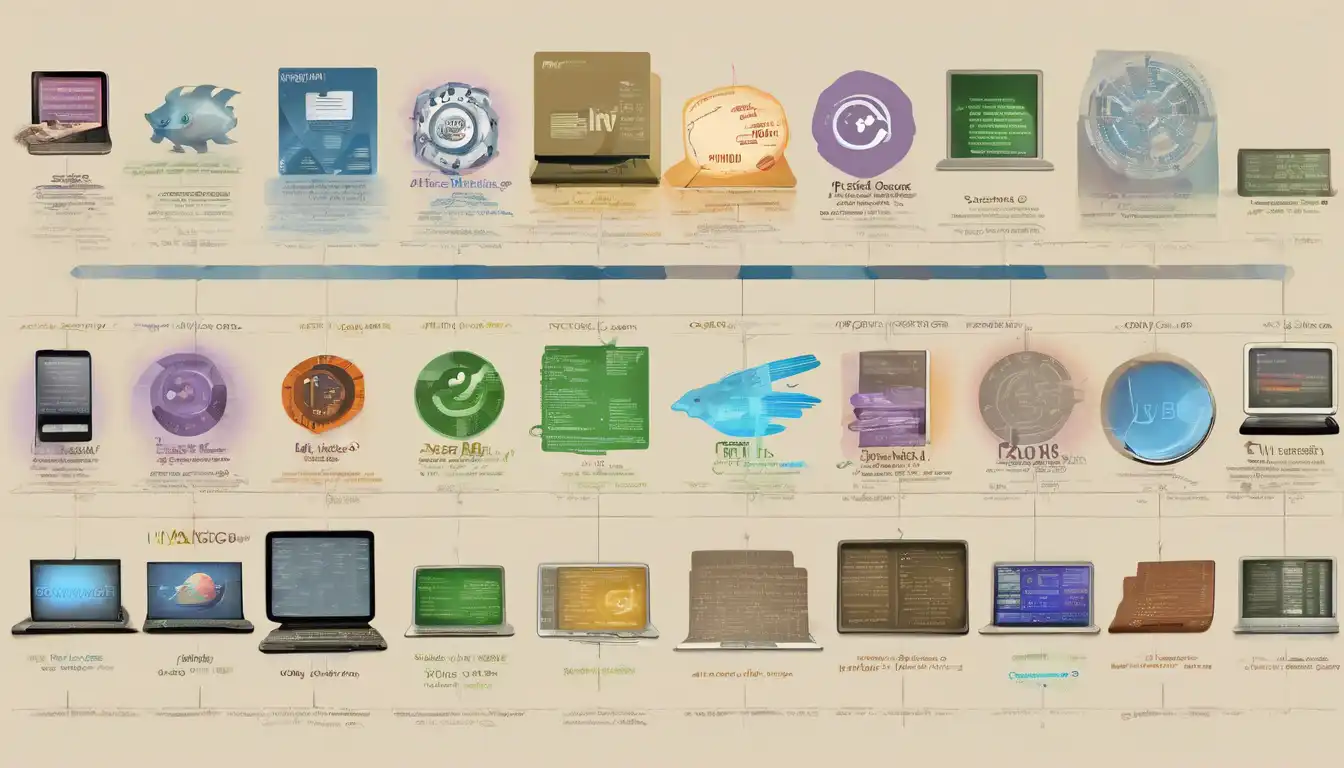The Dynamic Journey of Programming Languages Through the Ages
The evolution of programming languages is a fascinating tale of innovation, necessity, and the relentless pursuit of efficiency. From the early days of machine code to the high-level languages of today, each step in this journey has been marked by significant milestones that have shaped the way we interact with computers.
The Dawn of Programming
The story begins in the 1940s with the advent of machine language, the most basic form of programming. Programmers had to write instructions in binary or hexadecimal code, a tedious and error-prone process. The introduction of assembly language in the 1950s provided a slight abstraction, using mnemonics to represent machine instructions, making programming slightly more accessible.
The Birth of High-Level Languages
The 1950s and 1960s saw the development of the first high-level programming languages, such as FORTRAN and COBOL. These languages allowed programmers to write code that was more readable and closer to human language, significantly reducing development time. FORTRAN was designed for scientific computing, while COBOL was tailored for business applications, showcasing the early specialization of programming languages.
The Revolution of Structured Programming
In the 1970s, the concept of structured programming emerged, leading to the creation of languages like C. This era emphasized the importance of clear, logical structure in code, making programs easier to understand and maintain. The development of UNIX in C demonstrated the power and flexibility of this new approach, influencing countless future languages.
The Object-Oriented Paradigm
The 1980s and 1990s were dominated by the rise of object-oriented programming (OOP) languages, such as C++ and Java. OOP introduced the idea of organizing code around objects rather than actions, enabling more modular and reusable code. This paradigm shift has had a lasting impact on software development, with many of today's most popular languages being object-oriented.
The Modern Era: Diversity and Specialization
Today, the landscape of programming languages is more diverse than ever, with languages like Python, JavaScript, and Ruby catering to a wide range of applications, from web development to data science. The rise of domain-specific languages (DSLs) further illustrates the trend towards specialization, allowing developers to choose the best tool for their specific needs.
The evolution of programming languages is a testament to the ingenuity and adaptability of the tech community. As we look to the future, it's clear that this journey is far from over, with new languages and paradigms continually emerging to meet the challenges of tomorrow's computing landscape.
For more insights into the world of technology and software development, explore our technology section.
